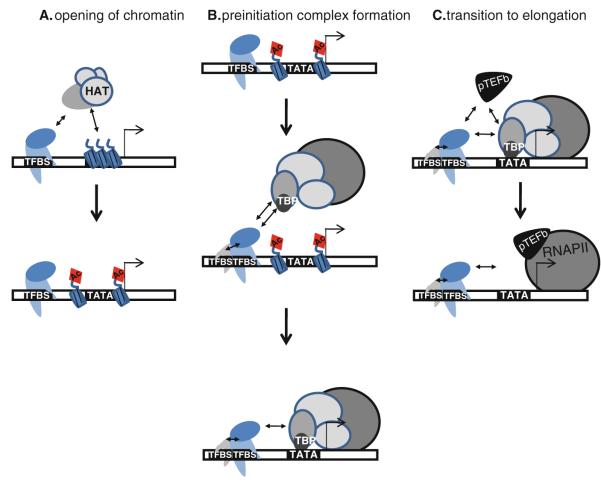Fig. 12.1.
Regulation of transcription. Shown is a schematic representing the three steps needed for productive transcription, including Step 1: the creation of open chromatin, which involves interactions between DNA-bound proteins and histone modifying enzymes (e.g. a HAT which can create an acetylated (Ac) histone); Step 2: assembly of the preinitiation complex, which can involve interactions between different DNA binding proteins and between DNA-bound proteins and general factors (such as TBP which binds to the TATA box); and Step 3: transition to productive elongation, which involves interaction between DNA-bound proteins and enzymes such as the pTEFb kinase. Although in this schematic the TFs are shown binding to transcription factor binding sites (TFBS) proximal to the transcription start site (indicated by the bent arrow), many transcriptional regulators can also bind to sites quite far from the core promoter regions

